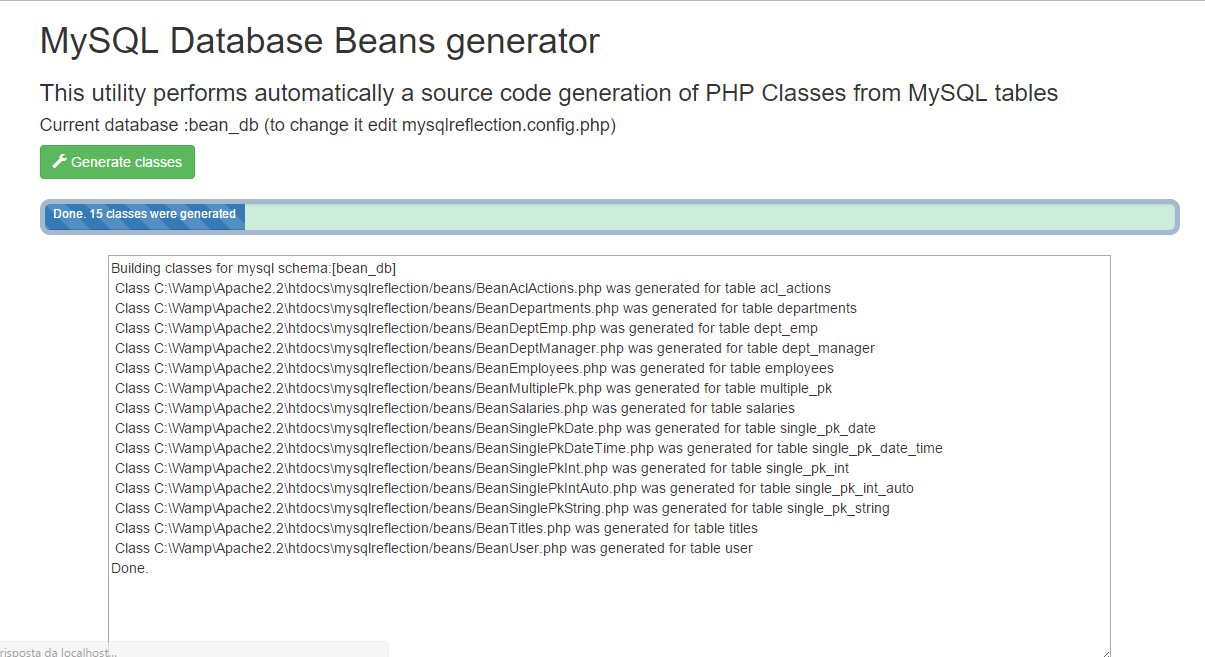-
Notifications
You must be signed in to change notification settings - Fork 16
MySQL ORM
WebMVC provides you with a useful utility for the Object Relation Mapping of MySQL. The utility generates automatically Model classes for any tables of a given database schema.
To generate Model classes with the purpose of mapping database tables you need:
-
Using lowercase an underscore, which are the widely used MySQL naming notation, on your database tables and fields names.
-
Configure your database schema by modifying
util\mysqlreflection\mysqlreflection.config.phpfile and, assigning appropriate values to DBHOST, DBNAME, DBUSER, DBPASSWORD, and DBPORT PHP constants, according to your MySQL settings. -
Then, launch the utility by typing:
http/localhost/util/app_create_beans.phpNote that, the GUI of the utility uses Bootstrap and jQuery from CDN. So you also need an internet connection alive before running it. -
Once the utility is started, click "Generate classes" button.
The following figure shows you the startup screen of the utility:

After running the generation of classes you can close the utility. You will find all the generated classes under models\beans folder.
Notice that:
- You can find a class for each table of your MySQL schema.
- Each auto-generated class name is prefixed with "Bean" followed by the table name in a PascalCase format. E.g, for table name users_roles you will find a class named BeanUsersRoles.
- Each auto-generated class extends
framework\Model.php. Consequently, it is itself a Model you can relate to a Controller
Each auto-generated Model class provides you with the following services:
- A constructor for managing a fetched table’s row or for adding a new one
- Management for both single or composite Primary Keys
- Automatic mapping of the different date formats may occur between application and database
- Destructor to automatically close database connection
- Defines a set of attributes corresponding to the table fields
- Setter and Getter methods for each attribute
- OO methods for simplifying the DML operations of SELECT, INSERT, UPDATE, and DELETE.
- A facility for quickly updating a previously fetched row
- Useful methods to obtain table DDL and the last executed SQL statement
- Error handling of SQL statements
- Camel/Pascal case naming convention for Attributes/Class used for mapping Fields/Table
- Useful PHPDOC information about table, fields, class attributes and usage of methods.
// TODO